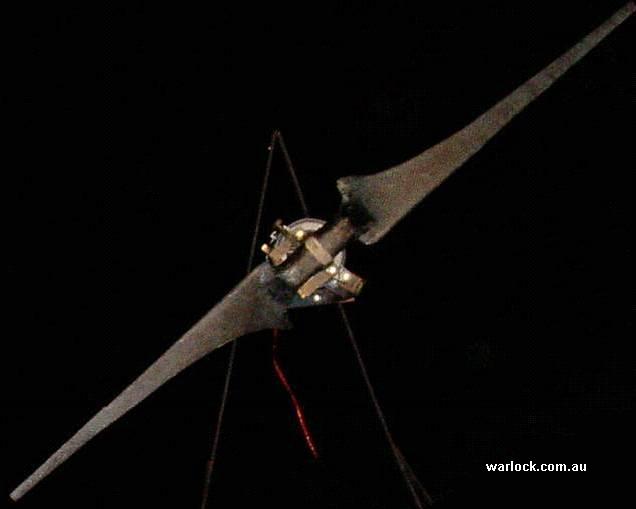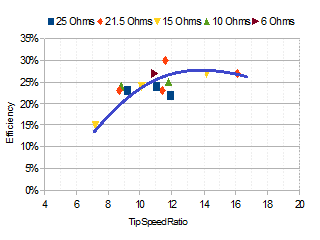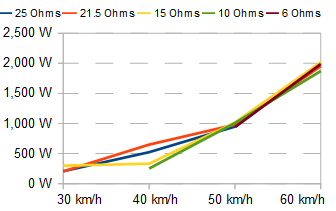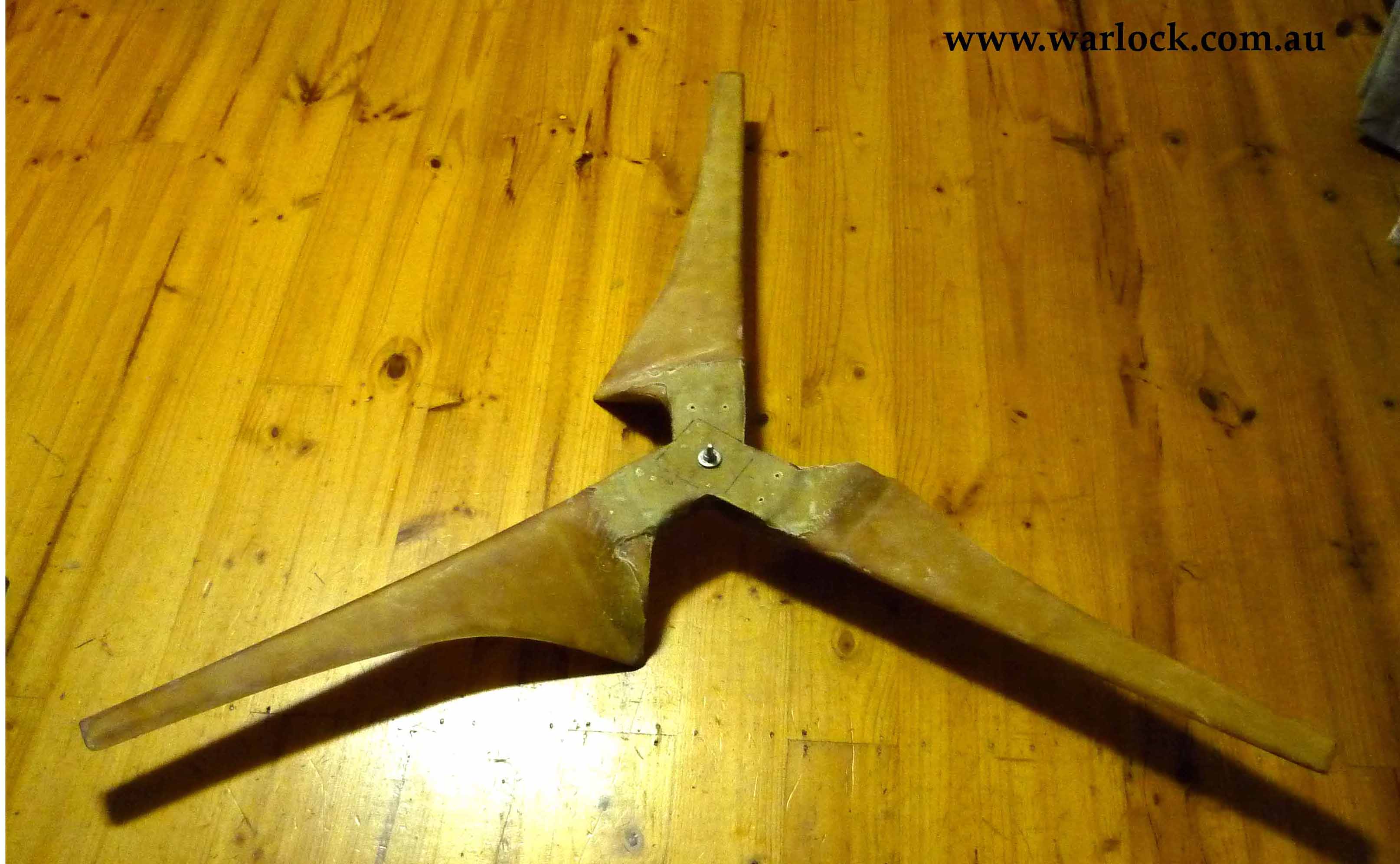




The wind turbine was bolted to a trailer and rpm, voltage and tsr was measured by connecting the generator to a very high power multi-tap resistor. The turbine was allowed to speed up to an open circuit voltage of 65 V (666 rpm) before the resistor load was connected.

Figure 11. Turbine testing
Measurement of results from the wind turbine
Note: Our method of turbine testing generated turbulent wind, affecting efficiency. The results should be used as a guide only
Rs is the resistance of the generator windings plus the power cable; 5.75 ohms
Rl is the resistance of the load; 6.6, 10, 15, 21.5 and 25 ohms
Once the blades have been characterized,
a new generator will be designed.
a new generator will be designed.
Power generated by the blades was calculated by dividing measured power by the efficiency of the generator. The following method is used to calculate the power generated by the blades;

Voltage across the resistor load was measured (Vl),
Vs = Vl x [(Rs + Rl) / Rl ]
Power produced by blades and lost in the generator, power cable and resistor load is given by;
P = V2/R
P = Vs2 / (Rs+Rl)
Results from the turbine test are tabulated below;
Testing the wind turbine

Total cost of the wind turbine
System cost (AUD)
Induction motor $15
Magnets $80
Moulds $72
Two Blades $14
Total cost $181
Conclusion



Continue to summaries about.....

500 W Kevlar Blade Construction


Frequently asked questions about plan orders, blade design, electrical work and generator matching can be found on our Q&A pages.

Previous
Page
Page
Related Articles



Vs




















Rs
Rl
Vl





30 km/h
40 km/h
50 km/h
60 km/h
40 km/h
50 km/h
60 km/h
30 km/h
40 km/h
50 km/h
60 km/h
40 km/h
50 km/h
60 km/h
30 km/h
40 km/h
50 km/h
60 km/h
40 km/h
50 km/h
60 km/h
30 km/h
40 km/h
50 km/h
60 km/h
40 km/h
50 km/h
60 km/h
30 km/h
40 km/h
50 km/h
60 km/h
40 km/h
50 km/h
60 km/h
Rotational Speed (RPM)
Power (Watts)
Blade Efficiency
Tip Speed (km/h)
Tip Speed Ratio (TSR)
Figure 12. Efficiency vs TSR
Figure 13. Measured Power
Power (Watts) vs Speed (km/h)
Power (Watts) vs Speed (km/h)


The carbon fibre blades maintained peak efficiency of 27% for all Tip Speed Ratios (TSR) between 10:1 and 14:1, The maximum power generated was 2.0 kW at 60 km/h wind speed.
By comparison, the typical tip speed ratio for wood carved blades is 7:1. Although they are cheaper to procuce, wood blades rotate at half the RPM reducing generators power output to 25%.
25Ω
820
1302
1753
820
1302
1753
21.5Ω
766
1363
1676
2365
766
1363
1676
2365
15Ω
809
851
1489
2098
809
851
1489
2098
10Ω
645
1291
1744
645
1291
1744
6Ω
1105
1607
1105
1607
25Ω
208
524
950
208
524
950
21.5Ω
205
649
981
1953
205
649
981
1953
15Ω
300
332
1017
2019
300
332
1017
2019
10Ω
252
1008
1873
252
1008
1873
6Ω
940
1990
940
1990
25Ω
23%
24%
22%
23%
24%
22%
21.5Ω
23%
30%
23%
27%
23%
30%
23%
27%
15Ω
stall
15%
24%
27%
stall
15%
24%
27%
10Ω
stall
24%
25%
stall
24%
25%
6Ω
stall
27%
stall
27%
25Ω
278
441
595
278
441
595
21.5Ω
260
463
569
803
260
463
569
803
15Ω
275
289
506
712
275
289
506
712
10Ω
218
438
592
218
438
592
6Ω
375
546
375
546
25Ω
9.2
11.0
11.9
9.2
11.0
11.9
21.5Ω
8.7
11.6
11.4
16.1
8.7
11.6
11.4
16.1
15Ω
9.2
7.2
10.1
14.2
9.2
7.2
10.1
14.2
10Ω
5.5
8.8
11.8
5.5
8.8
11.8
6Ω
7.5
10.9
7.5
10.9










